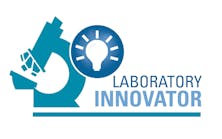Medical laboratory developers are seriously considering green or sustainable buildings because they use sustainable resources, lower operating costs and often create more productive working environments. But whether building or renovating, you should consider—first—whether elements of green building can enhance your operations.
Site selection
There are a number of elements to consider, beginning with site selection and, if you are building a new facility, the orientation of your building on the site.
If you are in an urban or suburban environment, select a site with easy access to public transit, thus reducing the need for employee and visitor automobile trips.
For a new structure, control the orientation of your building on its site to take advantage of solar gain where heat is needed and to provide appropriate shade where cooling is the dominant need.
For new or existing sites, provide bicycle storage racks and changing rooms or showers.
Sustainable use of resources
More effective use of water and fuel—electricity or natural gas—can be incorporated in almost every project. These improvements have become routine, and they may be mandated by regulation in some jurisdictions. Explore energy saving ballasts and bulbs, and lights controlled by motion sensors. In administrative offices, lighting levels (foot candles) can be reduced, and overhead lighting can be supplemented with task lighting that is used only when it is needed. Whenever you incorporate energy-saving fixtures in your build-out, be sure to check for rebates, which may be available from your local utility provider, or possible federal or state tax credits.
Waterless urinals, dual-flush toilets, and motion-controlled faucets are among the water-saving technologies that are now becoming common. Depending on location and building type, your choice of landscaping can also contribute to reduced water use and a green environment.
If your lab HVAC units provide frequent changes of air and 100% fresh air intake, you would meet one key criteria of a green environment—ample fresh air. However, this element of a sustainable environment is in tension with the desire to reduce energy consumption. In your office areas, operable windows can provide fresh air at lower cost. Also, zoning your HVAC system to allow for efficient heating and cooling of only those areas which require tempering for occupant comfort (or specimen storage or handling) is an effective green technique.
A 2008 New Building Institute study, partly funded by the U.S. Green Building Council, found that buildings which follow green design criteria may consume 25 to 30% less energy, with corresponding reductions in energy costs. Buildings which meet EPA Energy Star guidelines, according to the same study, may consume 40% less energy than buildings which do not meet this standard. Tenants who have installed energy saving components, such as reduced energy ballasts and bulbs, report that they receive a payback within 24 months of installation.
More exotic energy-saving strategies include the use of fuel cells, geothermal energy, and various applications of solar cells. Except for large projects and in certain climates, many lab users will not find these devices to be cost-effective or easy to install, develop, or maintain.
Material selection
Materials that reduce construction costs and enhance interior environment are additional elements of green design, more so in the office component than in the laboratory, where seamless flooring and resin countertops, special hoods, and lab benches are mandatory. In the office environment, re-use of parts of an existing installation, recycling construction debris, and selecting materials available locally (sometimes defined as within a 50-mile radius), or which have a high recycled content, contribute to a sustainable building approach. Also to be considered are paints, carpeting, and fabrics with low off-gassing. Formerly, these materials were much more costly for building alterations, but with increased demand they have become much more competitive.
Certification
You can incorporate green elements in your lab construction—whether new, ground-up construction or an interior alteration—with or without certification from a third-party independent advisor, such as a not-for-profit entity like the U.S. Green Building Council or the Green Building Certification Institute. Keep in mind that certification may add considerably to the cost of your project and the time it takes to complete it. You will need to decide whether the certification is worth the cost or whether you are primarily interested in the green design itself. Keep in mind too that while lower levels of certification can be relatively easy to obtain, higher levels, such as LEED Gold or Platinum, may result in extra costs not matched by corresponding savings.
Benefits and drawbacks
Many elements of green design are simply good design: rational use of energy and use of natural light and ventilation to make an environment visually attractive and comfortable for the people who inhabit it. Consider your goals in pursuing a green design. Are they wholly functional, for example, or are you also motivated by a desire for recognition in your community as a “green” enterprise? Then choose the design elements that best serve your business needs.
Marisa Manley is president of New York-based Healthcare Real Estate Advisors (www.hcreadvisors.com) a nationwide healthcare real estate consulting company working with clinical labs and other entities in the medical and healthcare industry. She can be reached at [email protected].




